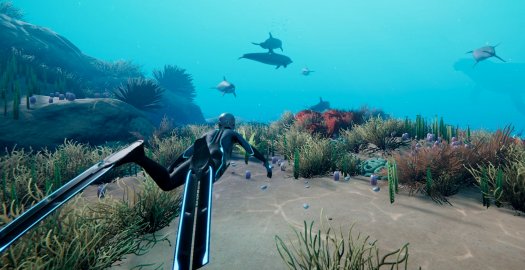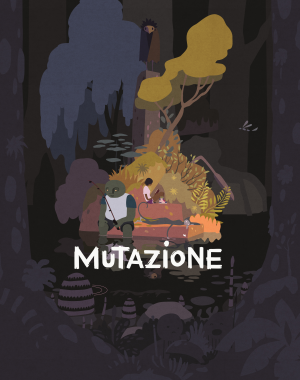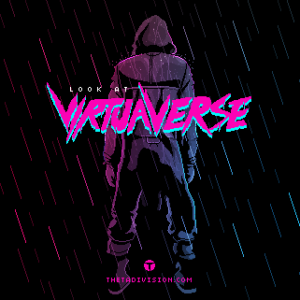Review for Beyond Blue

As a lifelong fan of oceans, I’d love nothing more than to do a deep-sea dive to explore a world-within-our-world that’s far more fascinating and imaginative than any sci-fi planet ever conceived. I mean, really, what’s a Wookiee or a Klingon got on a bottom-dwelling anglerfish, giant squid, devil ray or a Benjamin Button-like de-aging jellyfish for weirdness? Alas, being more than a little claustrophobic (elevators: fine, submarines at a thousand meters down: out!), the closest I’ll ever come is a whale watching boat tour or a coral reef snorkel. To venture any deeper than that, I need to live vicariously through brilliant underwater TV features like the BBC’s Blue Planet series. Or at least, I did until games like E-Line Media’s Beyond Blue came along and made me feel like I was actually there.
Real divers might take exception to that description, of course, but without the benefit of firsthand comparison, I can safely say that Beyond Blue is the nearest I’ve ever felt to exploring the ocean’s depths. As much as I enjoyed 2016’s ABZÛ, and as similar as the two titles are in many respects, that game was a more artistic take on marine exploration, whereas this one is more focused on realism and even education. Which is good, because here’s the rub: Beyond Blue isn’t really much of a game. There are no puzzles and only the most rudimentary of objectives to complete throughout its short three-hour playtime, so it’s more of a simulation than an adventure game proper, which makes for a rather single-minded experience. Still, with its superb production values, a slight but ongoing narrative with surprising emotional weight, and a number of educational extras to boot, it’s well worth taking the plunge for anyone with an interest in aquatic life.
The game puts players in the flippers of Dr. Mirai Soto, the lone diver aboard a submersible in the Western Pacific. Together with fellow scientists André and Irina, you are part of a three-person team launching an online Ocean Sense Network to study, record, and even livestream underwater ecosystems. Over the course of eight dives spanning fourteen days, your primary task is to track and monitor a family of sperm whales across a number of distinct environments at different depths, but along the way you’ll encounter and catalogue over forty other distinct species, collect biochemical specimens, activate underwater buoys, and investigate both natural and unnatural phenomena, stopping only for the occasional break back at your vessel to touch base with your sister back home who’s dealing with your ailing grandmother.
I called this a “simulation” earlier but really that isn’t true either, as you don’t have to worry about oxygen or pressure or any kind of danger at all. You’ll suit up already equipped with everything you need, including different types of scanners and lights. A compass is permanently displayed at the top of the screen, but it isn’t really needed as all your objectives are clearly marked on the display screen, including the distance to target. Swimming is simple, either with the WASD keys or a gamepad, and as you spend most of your time in open water, you won’t have to fuss much with any sort of precision. It is rather slow going, even when toggling the faster speed option, but for the most part that’s fine, as Beyond Blue is all about the journey rather than the destination.
The main story about the sperm whale family is a nice through line to tie the various dives together, as a baby is soon born and you’ll be eager to follow both mother and calf’s progress in the precarious time afterward, especially when it becomes clear that some kind of man-made noise in the ocean is spooking the all-female pod, while algal blooms might prove something of a more tangible threat. André is more interested in a group of young leatherback turtles found far from their usual romping grounds, struggling to survive, while Irina needs bacteria samples if she’s to find new cures for human disease at her self-funded pharmaceutical company. The three of you can communicate even during your dives, and the back-and-forth adds a welcome human element to the mix. You each have your own interests, personalities and emotions, but all of you are committed to working together to preserve the sanctity of ocean life.
You’ll need (and want) to get up close and personal with a number of different creatures along the way, dealing mainly with larger ones like whales, turtles and dolphins. There are two levels of scans required: the first can be done from a relative distance, merely holding down a button to capture the data when the target is in range and focus. The second is done by a manta-shaped “zoom ” stealth drone, which is performed the same way but involves first rotating around the subject until you find the correct point of interest in extreme first-person close-up. This may lead to a bit of fiddling, but neither task is at all difficult.
If so desired, you could probably plow through just the story missions in about an hour by making a beeline for one marker after the next, but the real joy of Beyond Blue is completing all the optional side quests to scan a certain number of each type of sea life you discover. The actual numbers seem rather arbitrary, but that’s not important, as it’s merely an excuse to go exploring. The ones out in open water are usually clustered near a mission event, so you don’t have to randomly search an entire ocean. But it’s much more fun to seek out those at the bottom amidst the coral, rocky outcroppings, even caves and caverns in pursuit of smaller species.
The complete list is impressive and truly runs the gamut: whales, sharks (don’t forget the remora clinging to their sides!), ink-squirting octopi, jellyfish, spider crabs, eel-like hagfish, giant sunfish and more. Smaller fish tend to be scanned in schools rather than individually, which makes them a whole lot easier to find but far less interesting to observe. In fact, one of my biggest laments about the game is that there isn’t nearly enough attention paid to investigating more particular species of interest. I’d have gladly spent more time looking for something specific than chasing down a few more of the same types I’d already found. The payoff for doing so isn’t much, either: a nice library of images and basic facts about each creature, but I’d have rather engaged more with them in their natural habitats. If you don’t hit your scanning quotas, you have the option of replaying any dive you’ve already completed to look for whatever you might have missed.
The emphasis on scanning brings with it another major drawback. When the scanner is off, there is nothing (except the compass at the top, which can’t be disabled) to impair your view of the ocean wonders before you. Activate the scanner, however, and a large reticle appears in the center of the screen around a smaller one indicating whether a target is in close enough proximity. (The same smaller reticle displays whether that creature has already been scanned or not.) This is distracting enough, but it’s nothing compared to the bizarre honeycomb grid pattern that begins forming around the screen edges and begins to close in on the middle. I assumed it must be related to water pressure or distance from the current mission target, but I was never able to confirm either theory, and the matter was never addressed. All it did was muck up the screen for no apparent reason.
In some games that wouldn’t be such a big deal, but Beyond Blue is absolutely gorgeous when left unfettered. Designed to look as realistic as possible, the graphics succeed admirably in making you feel like you’re really there, or darn close to it. Locations range from a gloriously turquoise atoll (later revisited at night for a much different palette) to the murky “twilight zone” (where sunlight has nearly been filtered out) seamount to the eerie, pitch black deep sea floor with its particularly odd bioluminescent life, brine pools, active steam vents and volcanic activity – and sadly, the odd animal carcass and human garbage that has sunk to the bottom and settled.
The marine life too is beautifully modeled and animated, so much so that you’ll want to reach out and touch a sperm whale as its hangs vertically, perfectly still while asleep, or maybe NOT reach out as you scan orcas or hammerheads (though the many types of sharks encountered here pose no actual threat). I could only sit and marvel at the glorious bait ball scene where a host of otherwise deadly mutual predators worked together to round up and feast on a giant cluster of fish, and it’s a treat to play fetch with a friendly dolphin (even if the cute little critter is unclear on the whole bring-back part of the equation).
I was less impressed with Beyond Blue’s soundscape than the visual presentation. The ambient sea sounds are authentic, from the chittering of dolphins to the haunting songs of the male humpback whale, but the ever-present music during your dives leans mostly toward New Age synth that is suitably serene but adds little to the experience. There’s a much more eclectic range of actual tracks on board your submersible’s MP3 player, which you can select from manually between dives, though you probably won’t spend long listening as really the only thing to do there is to phone your two colleagues for updates or your sister Ren for a bit of tense family conversation. There’s a degree of choice offered in your responses during these calls, but nothing that will alter the course of the story. The voice acting is uniformly excellent, which helps carry a narrative that plays out almost exclusively off-screen.
Communicating with André and Irina within the context of a new website venture is a clever way of making the game educational without feeling like school. As each scientist has their own areas of expertise, they are able to fill in the gaps with knowledge the others lack, but never in a condescending way. The odd livestream sessions even allow for question and answer periods with viewers, allowing the protagonist to share more details in a way that feels perfectly justified in context. But there’s much more where that came from in the form of sixteen “insights” unlocked as you go. These are all filmed video clips ranging from one to three minutes, introducing the real marine specialists who contributed to the game and further exploring topics like unusual animal behaviour, new technologies needed to study marine life less invasively, and how the oceans are being exploited and abused by mankind.
Beyond Blue has been created with support from the real-world OceanX outreach initiative, which is promoting the same kinds of research, preservation, and education that the in-game protagonists espouse. The pro-environmentalist message is clear, to be sure, but the game wisely maintains a very positive tone and message throughout. It’s a celebration of why we should want to save our oceans and their incredible denizens, rather than a browbeating lecture on what will happen if we don’t.
More so than many games, it’s imperative that you have the right expectations before jumping into this one. There is very little to actually do here, and not a whole lot more of an actual story. Instead, you play Beyond Blue for the same reason you’d go diving: to explore a world so very unlike our own, and to bask in the strange, unfathomable beauty of life within the seas, whose very existence is integrally linked to our own in ways we rarely even consider. It’s a shame that the scanner is so visually disruptive, and there’s no question that the experience would have benefited from a bit more variety of activities and pursuits, but what it does, it does so well that if you’re interested in the oceans at all, the shallow gameplay isn’t likely to dampen your enthusiasm.





























